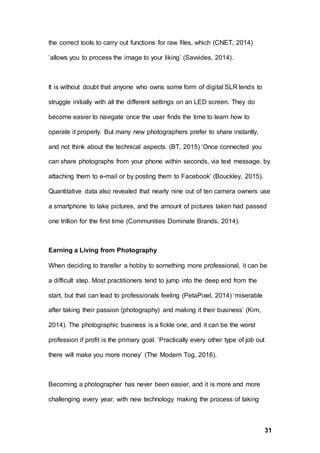This document summarizes a student's dissertation on how modern technological advancements have changed views of photography. The 9912 word dissertation contains 3 chapters that discuss the history and evolution of photography, the popularity of photography on social media, and comparisons between digital cameras and smartphones. The introduction provides background on photography as both an art and science that has continually evolved with technology. The first chapter looks at how photography has developed from its invention to modern digital photography and the threats new technology poses to professionals. The second chapter examines photography's popularity and how social media influences genres like food photography. The third chapter compares camera and smartphone lenses, earning a living from smartphone photos, and technology's environmental impact.





























































